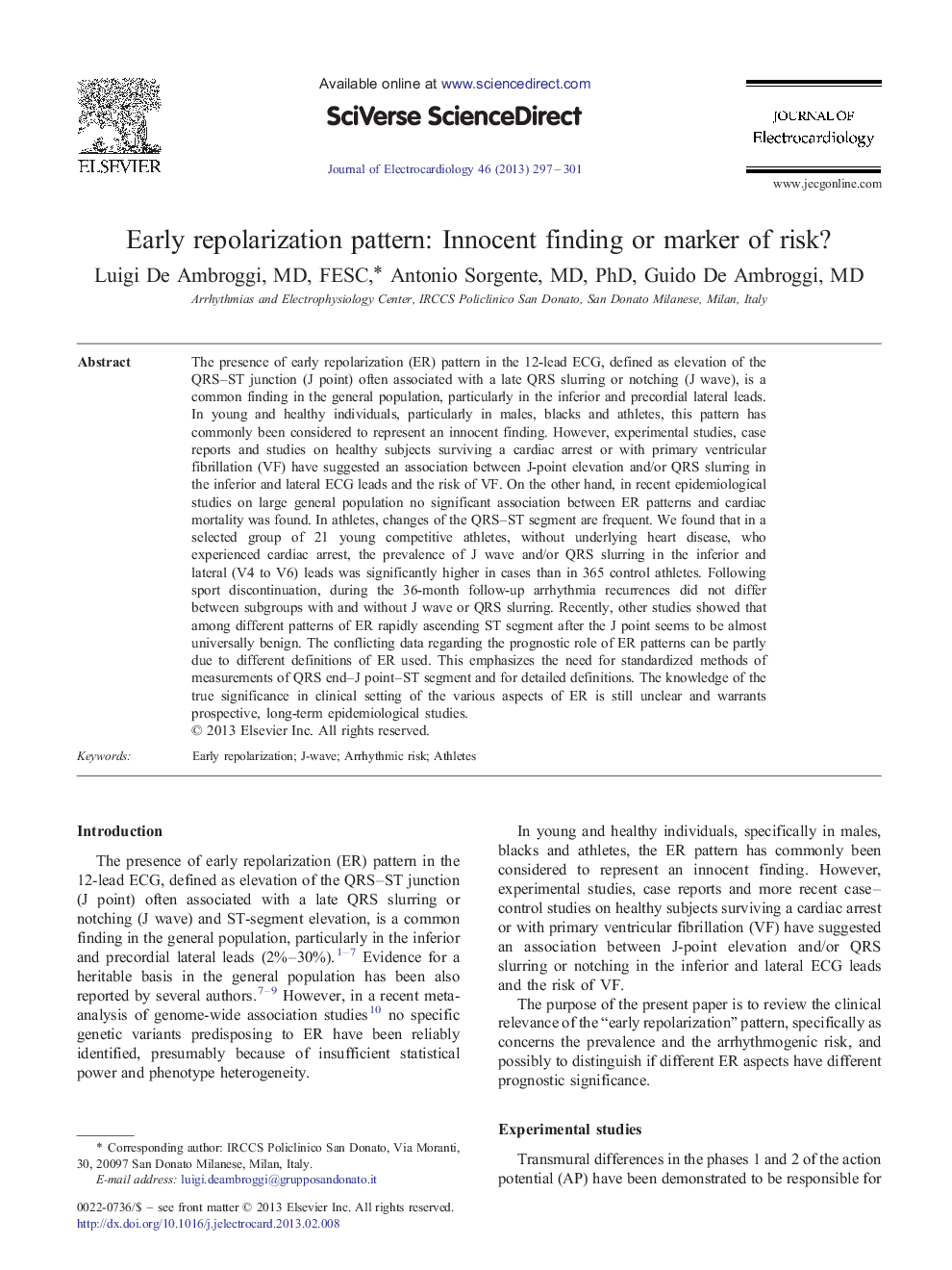| کد مقاله | کد نشریه | سال انتشار | مقاله انگلیسی | نسخه تمام متن |
|---|---|---|---|---|
| 2967854 | 1178860 | 2013 | 5 صفحه PDF | دانلود رایگان |

The presence of early repolarization (ER) pattern in the 12-lead ECG, defined as elevation of the QRS–ST junction (J point) often associated with a late QRS slurring or notching (J wave), is a common finding in the general population, particularly in the inferior and precordial lateral leads. In young and healthy individuals, particularly in males, blacks and athletes, this pattern has commonly been considered to represent an innocent finding. However, experimental studies, case reports and studies on healthy subjects surviving a cardiac arrest or with primary ventricular fibrillation (VF) have suggested an association between J-point elevation and/or QRS slurring in the inferior and lateral ECG leads and the risk of VF. On the other hand, in recent epidemiological studies on large general population no significant association between ER patterns and cardiac mortality was found. In athletes, changes of the QRS–ST segment are frequent. We found that in a selected group of 21 young competitive athletes, without underlying heart disease, who experienced cardiac arrest, the prevalence of J wave and/or QRS slurring in the inferior and lateral (V4 to V6) leads was significantly higher in cases than in 365 control athletes. Following sport discontinuation, during the 36-month follow-up arrhythmia recurrences did not differ between subgroups with and without J wave or QRS slurring. Recently, other studies showed that among different patterns of ER rapidly ascending ST segment after the J point seems to be almost universally benign. The conflicting data regarding the prognostic role of ER patterns can be partly due to different definitions of ER used. This emphasizes the need for standardized methods of measurements of QRS end–J point–ST segment and for detailed definitions. The knowledge of the true significance in clinical setting of the various aspects of ER is still unclear and warrants prospective, long-term epidemiological studies.
Journal: Journal of Electrocardiology - Volume 46, Issue 4, July–August 2013, Pages 297–301